The Quetzal Bird Facts
Quetzal birds are some of the most beautiful species in the world and are typically found in Central America. While there are several species of quetzal birds, they typically have iridescent green or golden-green wings with red bellies, along with some brown and gray on the females. Their beautiful colors inspired amazing legends from ancient Native American tribes and have made their several species well worth finding.
However, their sometimes elusive nature and the thick forests where they live sometimes make them truly challenging for even the most skilled bird watchers to find. As a result, it is worth knowing a few fun facts about these birds before you go birding. It might be your best opportunity to learn more about this fascinating bird type without traveling to Central America for a bird-watching expedition.
Do Quetzal Birds Still Exist?
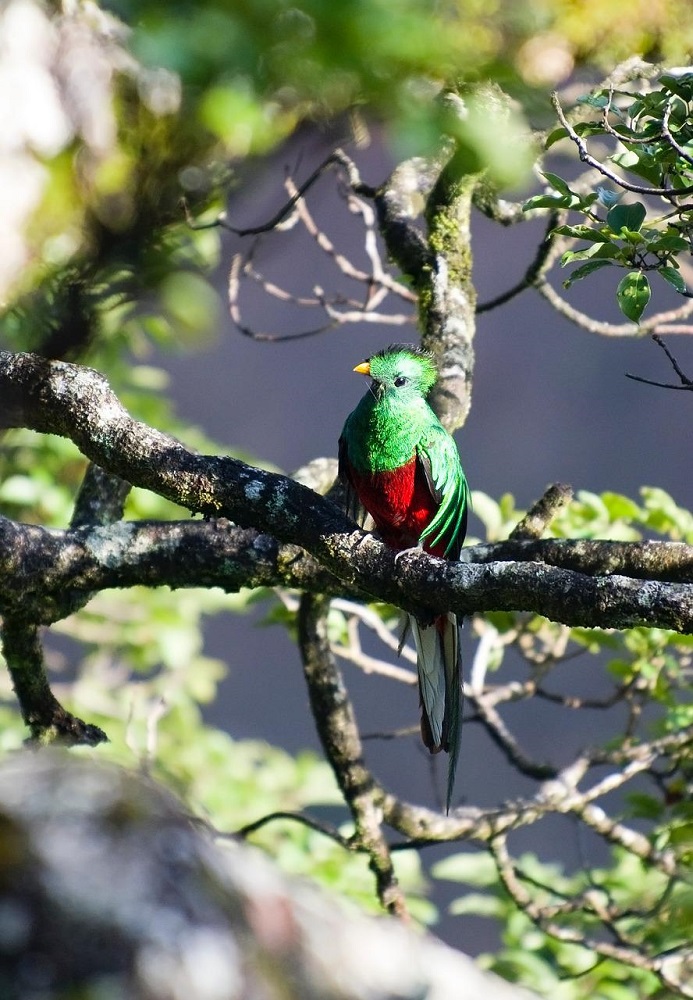
While there are many fantastic myths and legends surrounding these birds (which we’ll talk about later), they are not merely fables. Quetzal birds still exist throughout the Central American region, with some species even living in small portions of the southern United States.
Seven different quetzal species currently survive, including the crested, golden-headed, white-tipped, pavonine, and eared quetzals. The most famous of these species is undoubtedly the resplendent quetzal, as it was the sacred bird for the ancient Aztec and Mayan civilizations.
Even today, Central America venerates this bird, with the resplendent quetzal serving as the national emblem of Guatemala. In fact, Guatemala named its monetary unit the quetzal after these birds, further showing how important they remain to many cultures throughout this region.
What is the Average Size of a Quetzal Bird?
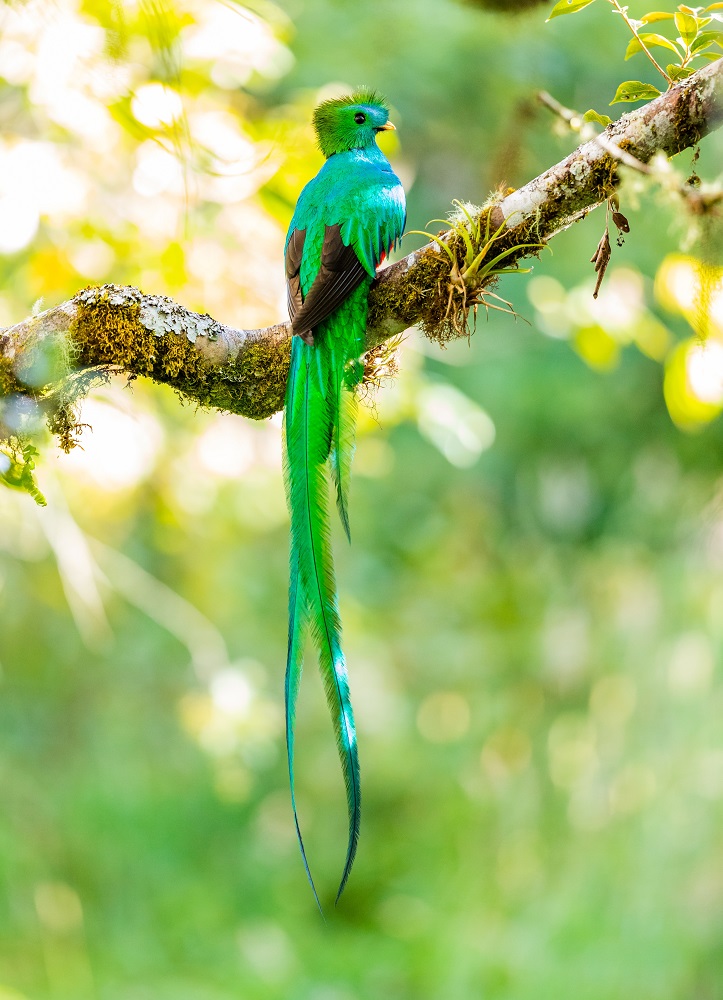
The different quetzal species in the world are typically all around the same general size and shape, though minor variations may exist. For example, the golden-headed quetzal weighs between 5.4 and 6.4 ounces (154-182 grams) with a 13-14 inch (33-36 centimeter) overall length.
However, the beautiful plumes of the average quetzal can add 3-36 inches (8-100 centimeters) to the bird’s overall size! Their wingspan varies between 12-14 inches (30-36 centimeters). The males are typically the larger of the quetzals, with some growing tail feathers up to 25 inches or so in total length.
While these are fairly large birds, they aren’t always easy to spot in the wild. They typically prefer dense plumage and generally avoid populated areas. That makes it challenging to spot them, though it isn’t impossible if you know where to search and ask the locals about potential spotting areas.
Note that the sacred status of the quetzal in many regions may make some uncomfortable about revealing their location. You may need to promise not to hurt the bird or to upset them in any way. Some individuals may still be uncertain about giving you advice, so be prepared for some resistance.
Do Quetzal Birds Live a Long Time?
Quetzal birds are fairly long-living in the world, having a lifespan of up to 20-25 years or so. While that doesn’t make them as old as many parrots, it does give them one of the longer lives of Central American birds. Their beefy size and clever hiding skills help them avoid many predators.
Note that the quetzal bird is typically not found in zoos, where it might have lived longer. Their personality and behaviors make it hard to keep these birds in zoos, and they rarely survive when put in them. That makes conserving their population very tricky in some areas.
How Rare is a Quetzal Bird?
Quetzal birds aren’t necessarily rare in their habitat but can be elusive and hard to spot. As mentioned before, they prefer dense forests and typically stay well-hidden from both predators and clever bird watchers. Their omnivorous diet helps them adapt to these areas, as they’ll happily eat bugs and fruits.
As a result, their rareness is often heavily debated by locals and even bird experts. Some declare that they’re very rare and almost impossible to find, while others claim that they’re more available.
It is important to do a little research when traveling for birding, as they may be more common during specific months and seasons. For example, they may be more active during some mating seasons or when avocado trees are in bloom, as these fruits are easily the quetzal’s favorite food.
Where is the Quetzal Bird Found?
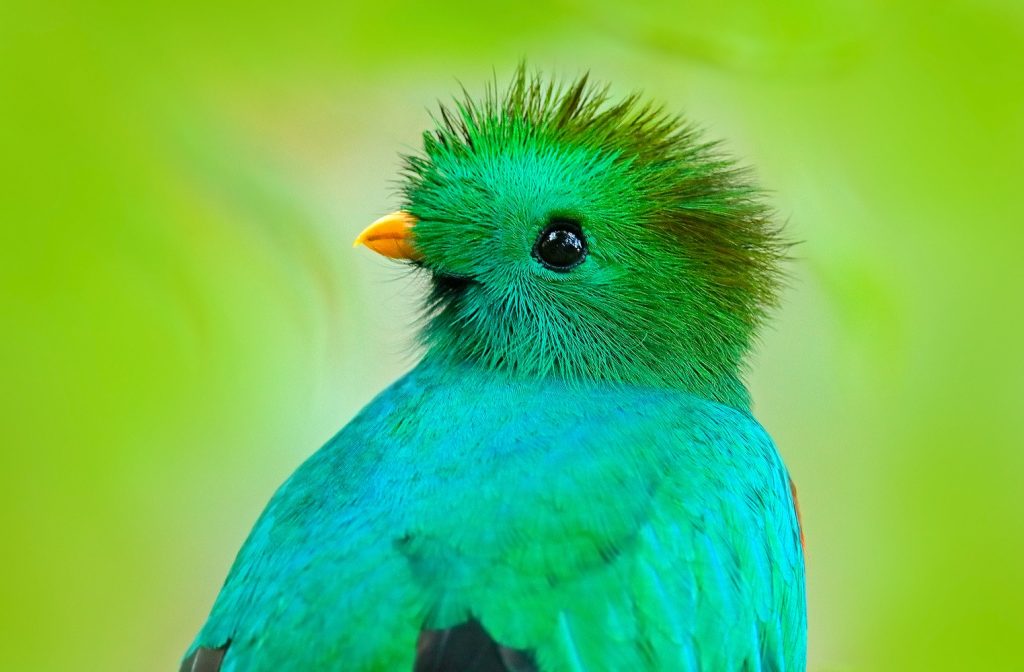
Quetzal birds are typically found in Central America, though there are a few areas in the southern United States where some species can be spotted. Typically, though, you’ll need to travel to places like Mexico or Guatemala if you want to spot species like the resplendent quetzal.
For example, you are more likely to spot them in areas like Poas, Cerro de la Muerte, and Monteverde throughout Costa Rica. They typically prefer higher lands in the area’s cloud forests, as these spots provide high levels of protection and minimize the risk of getting spotted by predators.
Most bird-watching pros time their quetzal spotting by the region’s avocado tree spread. As mentioned earlier, quetzal species love avocados and often nest near these trees. Talk with locals about avocado tree locations to learn more about where you might find quetzals in these areas.
The best spotting times will vary depending on the specific region. For example, most quetzal species are most active from December through May, though you may see them more commonly from March through June. These latter months are the quetzal’s mating season, when they’re incredibly active.
How Many Quetzal Birds are Left in the World?
The quetzal’s rather elusive nature makes it fairly tricky to gauge how many of them are left in the wild. Some research has found that around 50,000 resplendent quetzals are left in the wild, which makes them the rarest of the surviving quetzal species.
Thankfully, other quetzal varieties have far more numbers and are not considered rare or in danger. They typically don’t have the same legendary status as the resplendent quetzal, which has helped protect them from the problematic hunting and trafficking issues that affect the resplendent variety.
Is the Quetzal Endangered?
Thankfully, most species of quetzal are not considered endangered or even threatened and are widely available throughout their region. Even if they’re hard to spot in some areas, bird population experts estimate that most quetzal species have a stable and safe population.
However, the resplendent quetzal is considered at a near threatened status, making it the rarest of all quetzal birds. Near threatened indicates that a species is at risk of becoming endangered but hasn’t yet become truly threatened. The IUCN uses several tracking criteria to gauge this status.
Why is the resplendent quetzal near threatened? Well, it is important to note that this status is only for Mexican and Guatemalan resplendent quetzals. However, it is also critical to note that these areas are where the quetzal is most common, with a majority of its population living in these areas.
The resplendent quetzal is endangered due to continued habitat loss due to logging, continual forest fires, illegal hunting, and trafficking. While it is against the law to hunt this bird in Guatemala and Mexico, many people still hunt them and sell them on the Black Market as pets.
Unfortunately, the quetzal does not do well in captivity and typically only lives a few years as a pet. This tragic situation is only exacerbated by their natural beauty and legend. Conservation efforts have helped to stymie some of these problems and have helped minimize the risk of endangerment.
What Sounds Do Quetzal Birds Make?
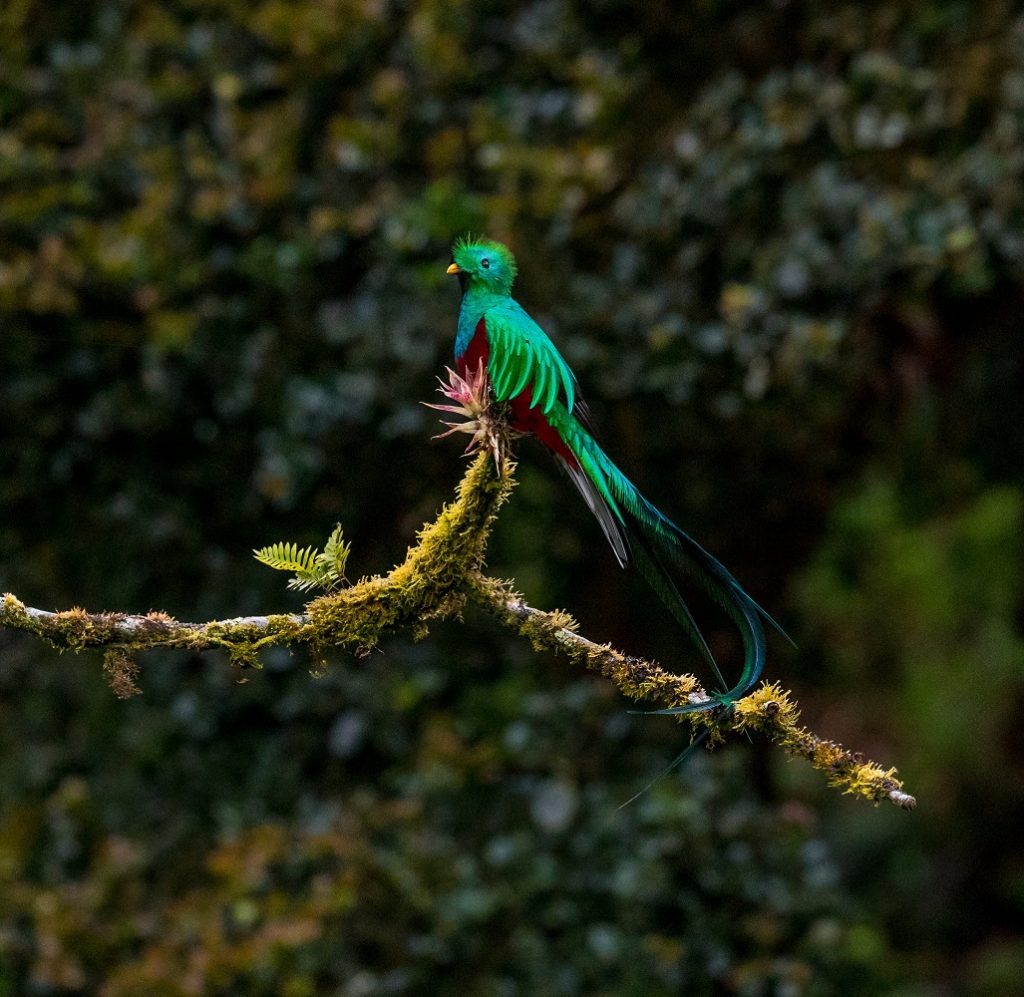
When you’re out in the wild trying to find a quetzal, you’re going to hear many sounds around you. The dense forests and near jungles where they live will be alive with other animals, including many loud bird species that will sing and distract you from finding the quetzal.
The resplendent quetzal sings quite beautifully, with a deep, smooth, and somewhat slurred and melodic style. However, they also make a rather sharp or cackling sound when flying or agitated, with a sound that some have said sounds a bit like “perwicka” when they take off.
It isn’t a bad idea to check out birding websites for audio or video of the quetzal calling. Though most species have a fairly similar song to the resplendent quetzal, there may be slight differences. Noting these can help make it easier to spot different quetzal species, no matter where you travel.
Is the Quetzal a Magical Bird?
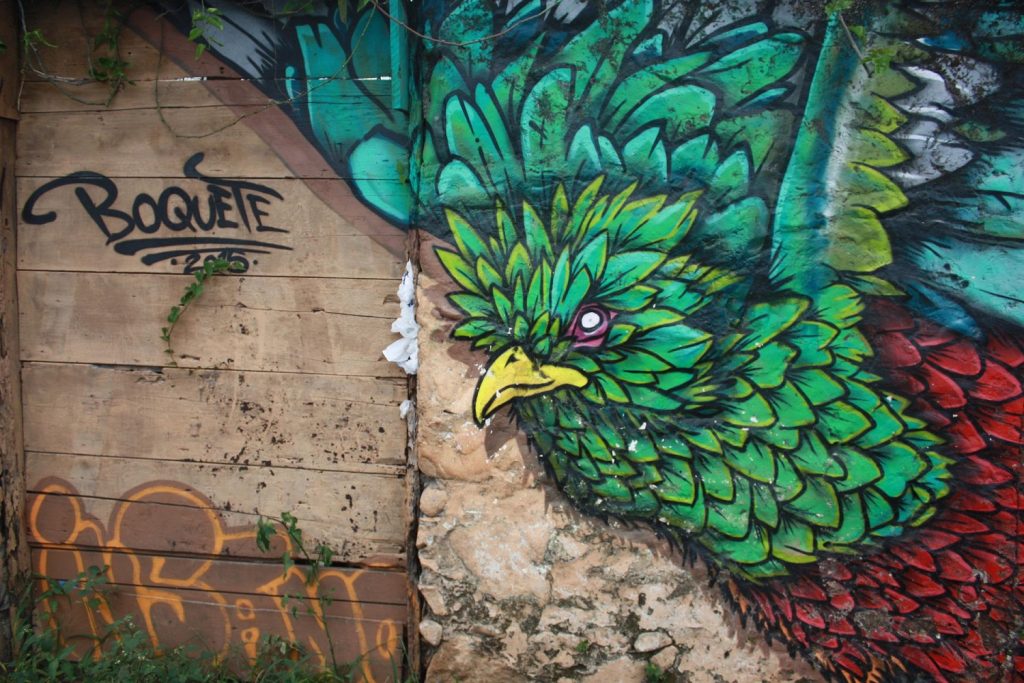
The quetzal is considered a sacred and even magic bird by many cultures throughout Central America. It has a heavy connection to Quetzalcoatl, the Mayan and Aztec god of the air. He appears repeatedly throughout various religious grounds in both cultures and is represented by the quetzal.
This deity is often represented as a feathered serpent descending from the Chichen Itza pyramid during the spring equinox. They were so venerated by these cultures that leaders wore their feathers in headdresses and killing one was considered an unforgivable crime punished by death.
Related post: Facts About The Largest Birds